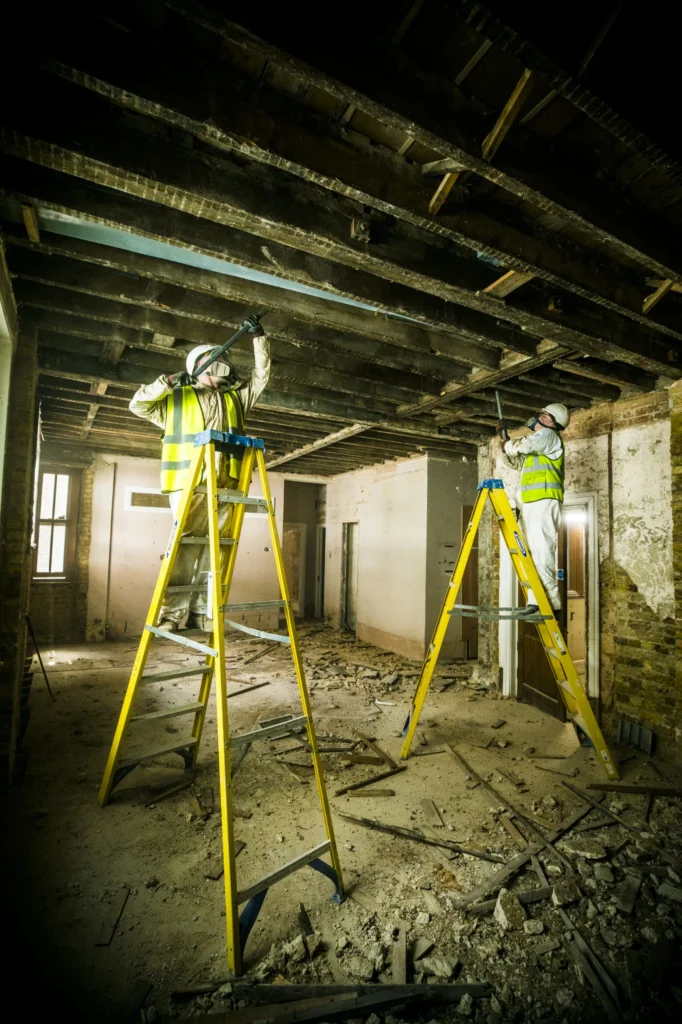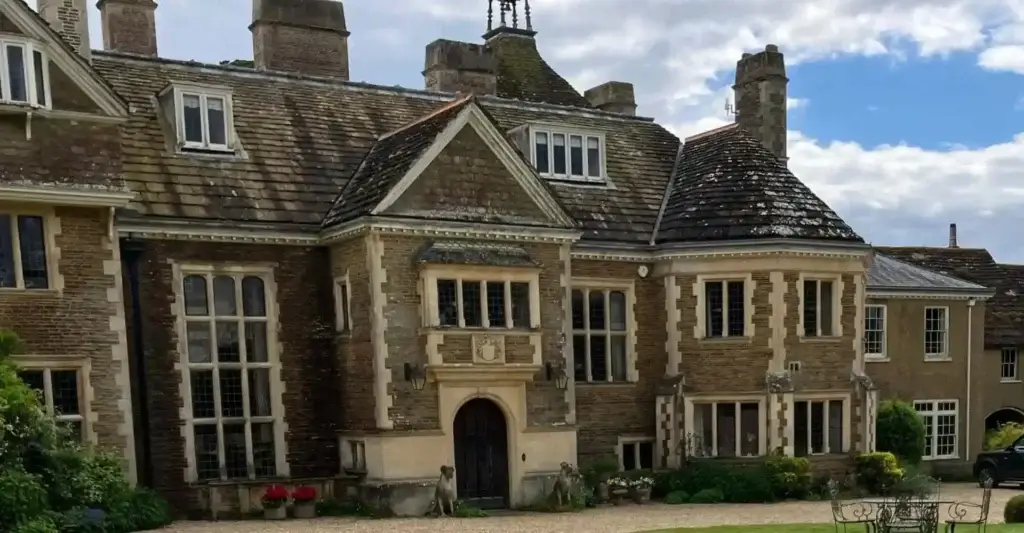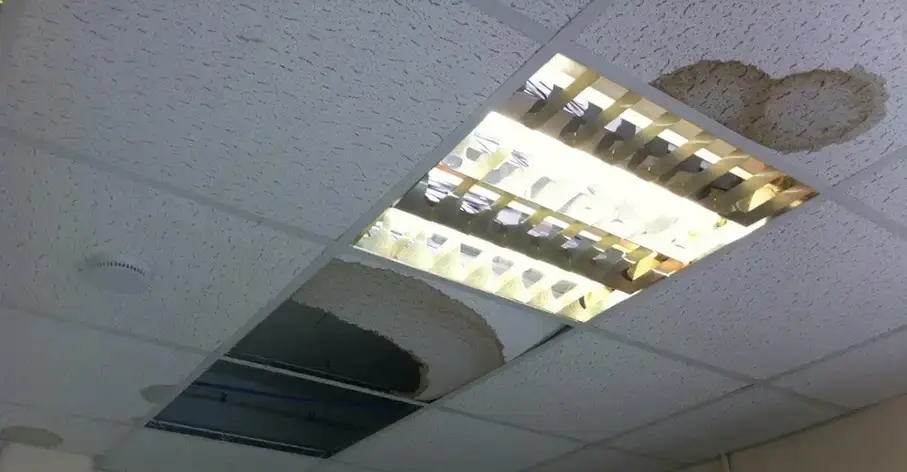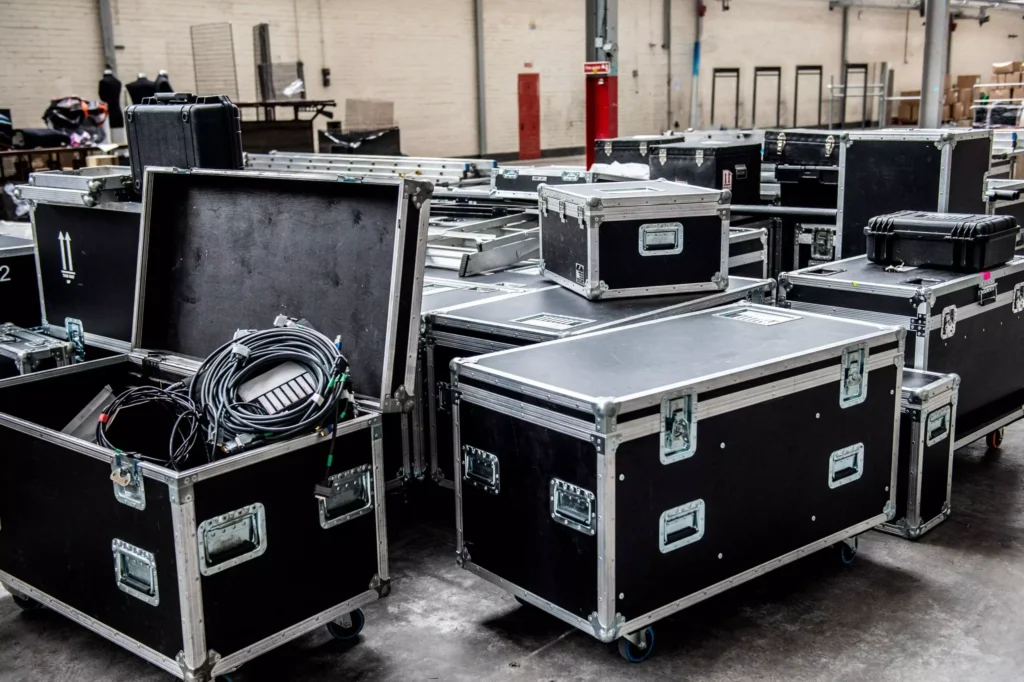The Problem
Fires in commercial buildings can cause extensive damage, requiring expert fire damage restoration to ensure safety and prevent long-term structural and health risks. One February, a devastating fire broke out at The Law Society Headquarters on Chancery Lane, a Grade 2 listed building, after an electrical fault. The fire rapidly spread, destroying the roof and a staircase between the third and fifth floors.
The fire was so severe that 150 firefighters and 25 fire engines were needed to bring it under control, which took over 12 hours. While no one was injured, the aftermath presented serious challenges:
- Extensive fire damage to multiple floors and structural elements.
- Smoke and soot contamination, posing long-term health risks.
- Water damage from firefighting efforts, increasing the risk of mould growth.
Fires in historic buildings like this require specialist cleaning methods to ensure preservation while meeting modern safety standards. In the UK, commercial fires affect more than 22,000 businesses annually, and heritage buildings are at higher risk due to older electrical systems and outdated fireproofing measures.
With the damage assessed, the Law Society quickly brought in contractors to begin restoration. However, the scale of the damage required specialist fire cleaning expertise.
The Solution
Our fire damage restoration plan was executed in five key phases, ensuring the building was cleaned, restored, and protected for future use.
Phase 1: Soft Strip-Out
The priority was removing all irreparably damaged materials, including:
- Burnt furniture, office equipment, and flooring.
- Loose fixtures and plasterboard posing safety risks.
- Debris that could hinder restoration efforts.
Our team of 18-19 technicians worked around the clock and completed this phase within two weeks.
Phase 2: Hard Strip-Out & Fire Cleaning
Next, we removed fire-damaged fittings and fixtures, such as:
- Plasterboards, skirting boards, and door frames.
- Severely damaged walls and structural elements.
We simultaneously conducted specialist fire cleaning on all salvageable surfaces to remove soot, ash, and toxic residues. This phase took six weeks to complete.
Phase 3: Mould Remediation
Due to water saturation from firefighting efforts, mould growth became a major issue, requiring immediate action. Our four-stage process included:
- HEPA Vacuuming – Removing loose mould spores.
- Deep Surface Cleaning – Applying formulated cleaning solutions.
- Fungicidal Treatment – Eliminating mould at the root.
- ULV Fogging – Using a fine mist to destroy airborne contaminants.
This phase was completed in two weeks, ensuring a safe, mould-free environment.
Phase 4: Building Drying
With 200 drying units strategically placed throughout the building, we:
- Monitored moisture levels 24/7.
- Prevented further mould growth and structural weakening.
- Avoided costly delays – a single floor malfunction could have caused £3,000-£4,000 in setbacks.
Our team ensured that drying operations ran smoothly and efficiently.
Phase 5: Mould Prevention
To prevent future mould outbreaks, we manually applied a Hyalophane bonding agent to over 500m² of wooden joists, providing long-term protection.

The Result
Thanks to our structured approach, the fire restoration and cleaning process was completed within six months, even as we worked alongside contractors handling structural repairs.
- Safe & Clean Environment – All hazardous materials, fire residue, and contaminants were eliminated.
- Protected Historic Features – Specialist cleaning preserved the building’s integrity.
- On-Schedule Restoration – The building was left fully dried and ready for reinstatement.
The Law Society was reopened within months.
Key benefits delivered:
Minimised Downtime: The swift response allowed critical office areas to reopen within 24 hours, limiting business disruption.
Cost Savings: The quick action prevented further structural damage, reducing repair costs and protecting valuable assets.
Expert Monitoring: Regular updates and moisture tracking ensured the drying process was efficient and effective.
The Importance of Commercial Fire Cleaning
Fires in Grade 2 listed buildings present unique risks due to ageing materials and limited modern fireproofing. Research shows that over 400 historic buildings suffer serious fire damage in the UK every year, often requiring specialist restoration to prevent permanent loss.
At Ideal Response, we understand the delicate balance between rapid restoration and historic preservation. Our expertise in commercial fire cleaning ensures businesses and institutions can recover quickly, safely, and efficiently.
If your commercial property has suffered fire damage, don’t wait, smoke and soot can cause long-term structural and health issues. Contact us today for a professional, tailored fire cleaning service that gets your business back on track.





















